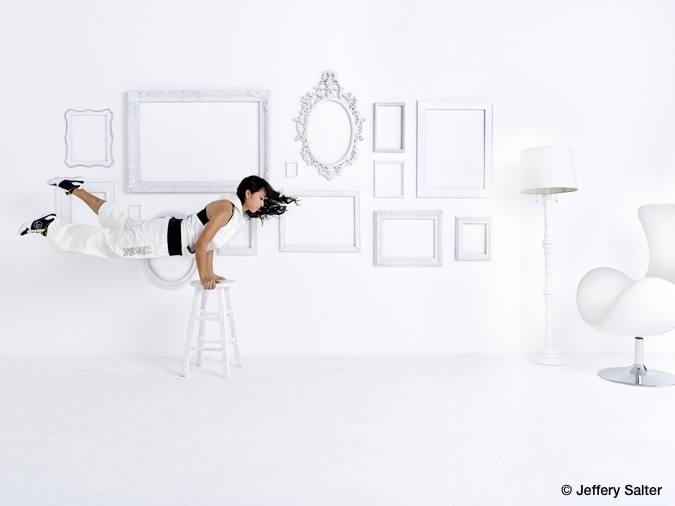 Capture Integration client Jeffery Salter is featured once again in Phase One news. Check out the new feature that covers his transition into medium format and his growing success as a magazine & advertising photographer. Congrats Jeffery!
Capture Integration client Jeffery Salter is featured once again in Phase One news. Check out the new feature that covers his transition into medium format and his growing success as a magazine & advertising photographer. Congrats Jeffery!
Originally posted on Phase One
Camera: Phase One 645DF+
Digital back: Phase One IQ260
Jeffery’s partner of choice: Capture Integration
Photographer Jeffery Salter started his career as a photojournalist, shooting old-fashioned 35mm film. He covered everything from violent social upheaval in Haiti and the tragic Pan Am airliner crash in Lockerbie, Scotland, to glamorous fashion shows in New York, Milan and Paris. When he made the transition from newspapers to magazine work, he switched over to medium format, and began shooting portraits and perfecting his uniquely stylized lighting techniques.
Salter’s first digital back was a Phase One P40+, which gave him more than 80,000 trouble-free exposures before he decided to upgrade to an IQ260 digital back. Within three months of the upgrade, Salter had three magazine covers published. The road from gritty, breaking news photojournalism to glossy magazine work—for Sports Illustrated, Ebony, Billboard and Cigar Aficionado—took some re-focusing. And this, in his own words, is how Salter did it.
Switching Gears & Upgrading my Gear
After years of being a newspaper staff photographer — for both the Miami Herald and the New York Times — I realized that I wanted to make the transition into magazines. The fast-paced world of breaking news was an invigorating adrenaline rush, but it never allowed me to do the well-lit, highly stylized portraits that I really wanted to do so I decided that I needed to change direction. Rather than just jumping in headfirst, I chose the smoother route. While still at the Miami Herald I invested in medium format film cameras and a bunch of strobes in order to shoot portraits for the paper’s Sunday magazine. This allowed me to build a portrait portfolio that I could then show to national magazine photo editors. It also enabled me to get a photo agent, Marcel Saba, who then opened doors for me to prominent publications around the world. The difference between shooting for newspapers and shooting a magazine cover is vast. For me, a great magazine cover shot is the same as producing fine art. It has to grab the viewer’s attention and compel them to buy it. It has to seduce them into wanted to see more, and it can sometimes tell a story all by itself. It can also become a visual icon that stands the test of time and winds up in the history books. Magazine covers make bold visual statements, not just about the subject, but also about the magazine itself. That’s why it’s the most important page of a magazine and publishers tend to have larger budgets for producing them. And that’s where, in many cases, the refined look from a medium format digital file can really shine.
Good Assistance Leads to Success
When I purchased my IQ260 and 645DF+ camera body via an upgrade (from P40+) Capture Integration (CI) assisted me in my choices. Capture Integration understands the challenges a magazine and advertising photographer has in a highly competitive market. They offer real world practical advice on Phase One products and Profoto lighting. And on several occasions, they provided me with on-site advice during the production. In mid-June, I photographed LeBron James for Sports Illustrated, and this became the first ever published magazine cover done with an IQ260, printed on July 1, 2013. As of August 2013, I am very proud to say that I have had a total of three national magazine covers with my IQ260. I decided to upgrade my P40+, quite a battleship that had given me over 80,000 trouble-free exposures, to the IQ260 for a variety of reasons. Chief amongst them was the very liberating ability to review files on an iPad while shooting. The folks I’m commissioned to photograph are often…quite frankly, in a hurry. The time saved from quickly reviewing a large image on an iPad and shooting untethered directly to a CF card in the IQ260 digital back, is time gained to shoot another set-up.
Making it Possible to Invest in Phase One
It’s a big step when you move from DSLR to a Phase One medium format camera system. I made my first Phase One investment in October 2009. It was made possible when I was commissioned to shoot a ten-day editorial assignment for a national magazine. When they asked for an estimate I put a line item in for a 10-day rental fee of a medium format system. When they approved it, my contact at Capture Integration allowed me to put that rental fee into ordering a Phase One 645DF with a P40+ digital back. Needless to say on every assignment bid or estimate we put in a line item for medium format camera usage, in addition to a digital capture fee and digital post-production fee. Of course not every client has the budget for this, but in my case I have been fortunate enough to work for clients who appreciate the look of my images and understand my workflow needs, which include Phase One digital backs. I have since upgraded to the IQ260 and the 645DF+. It has been an investment in my creativity and myself as a professional, and I believe it will have a continued positive impact on my magazine, commercial and advertising assignments. Not to mention the added value of being able to put the back on a technical camera for my landscape and architectural adventures.
Jeffery Salter’s most recent cover shoot, and his third with the IQ26O, was for Sports Illustrated, featuring international soccer star Mario Balotelli.